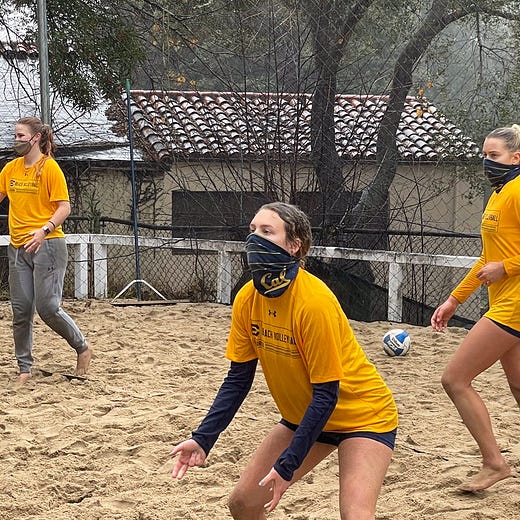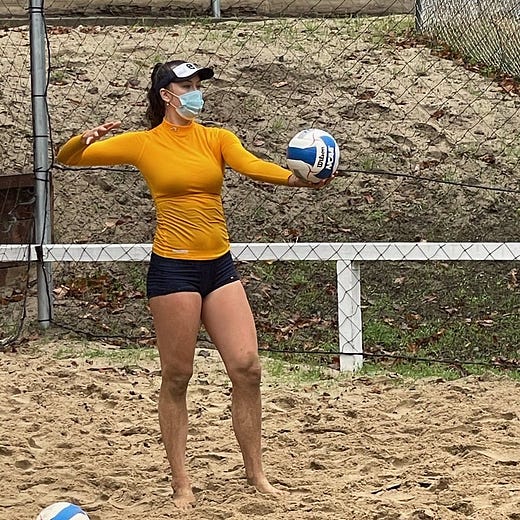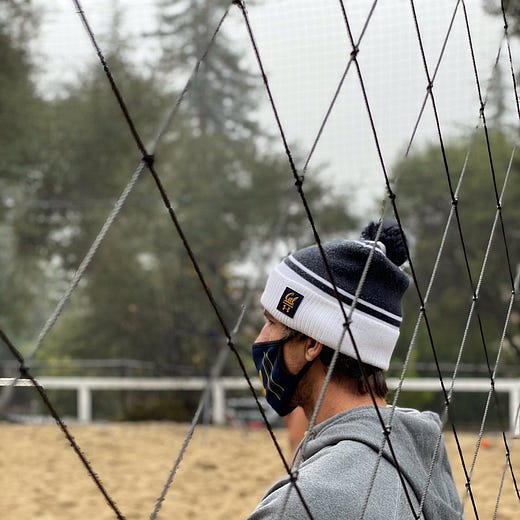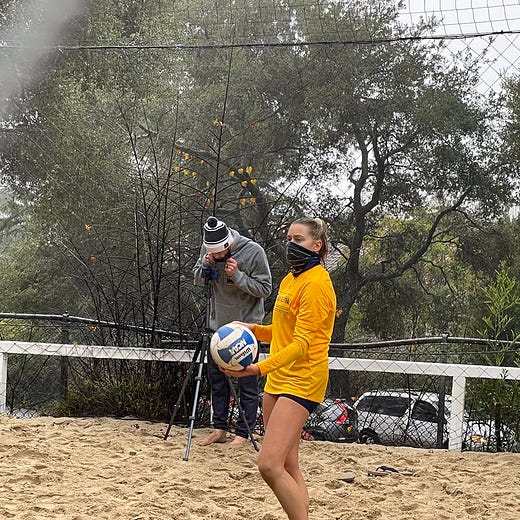Will all 29 Cal programs get to play in the spring 2021 semester?
A compilation of what little that we know about the non-revenue sport plans for 2021 with a lot of speculations
We are in a brand new year and there exists a vaccine, but the time of COVID-19 will continue to impact almost all aspects of our lives until we can produce, distribute, and innoculate the masses in the coming months (that could even be years). Nonetheless, many things that were pushed back to the distant “future” that is the year 2021 are now in the “present”. We could be having an extremely busy few months with 29 of the 30 (everything but football although they should also be practicing) Cal Athletics programs all in action.
While some schedules around the country have been trickling out, Cal has not yet announced any schedule outside the known ones for men’s and women’s basketball. In this post, I will attempt to summarize what little that we do know about the plans for the Olympic sports and the numerous wrinkles that will make their implementations challenging.
One thing that is for certain, expect a lot of these “plans” to be only written in pencil and be frequently amended, often on very short notice.
Quick Recap of the Fall
As everyone reading this post surely already know (even if they might have missed it because they blinked), the Pac-12 conference played a shortened football season without a bubble this past fall with varying degrees of “success”. A team that lost to the Cal Bears and did NOT win its division in Oregon was crowned the conference champion.
The Pac-12 initially wanted to hold off football until 2021 but were peer pressured by the other conferences to play in the fall. Many games were canceled due to COVID. Cal Football only managed to play just 4 of the originally planned 7 games with one of the games, the “season opener” at UCLA, coming together on just 48-hour notice.
While Cal Football had a lot of cancellations of contests, they were able to keep the vast majority of the student-athletes and staff COVID-free. The students and staff were subjected to daily COVID tests. Contact-tracings rather than COVID infections were the reasons behind why whole positional group was ruled out of games, leading to the cancellations. Compared to the generation population in the US, a smaller percentage of the Cal football student-athlete contracted the disease.
Possibly more importantly, the student-athletes who did get COVID throughout college football were supposedly also monitored much closely than the general population for any long-term affects, particularly of the heart. According to reports, they were also supposed to undergone a series of comprehensive tests before being cleared to resume athletic activities. This all sounds great on paper, but it would take a lot of efforts by a lot of people to be implemented effectively. One also can’t help but wonder if some of the resources for the athletes may be better spent on the many overwhelmed general hospitals.
The winter sports were allowed to start preparing around November. Both Cal Men’s and Women’s Basketball had to face extra restrictions initially due to inability to share the same ball due to the tightre City of Berkeley regulations. Those restrictions were softened as more evidences came in that COVID spread was much more through the air than from surfaces. Cal Men’s and Women’s Swimming held non-scoring meets against Stanford by the end of November. The aquatic sport community were encouraged by the CDC current guideline that COVID likely won’t spread from water.
Around the country, however, many collegiate Olympic sports programs were announced to be cut due to financial burden caused by the pandemic. It’s sad that that growing number of cut programs is so large that it’s impractical for me to spend time listing here. Among the most notable are the Iowa’s men’s swimming and diving and Stanford’s plan to cut 11 programs, including their men’s rowing and field hockey (the two of their cut programs with counterparts at Cal).
While the NCAA went ahead and kept their College Football Playoffs and Championship game on schedule for Division 1 (Division 2 and 3 sports have been canceled for the entire e2020-21 school year), they have held back on the other NCAA Championships. Conferences like the SEC and ACC went ahead and played their fall non-revenue sports before pushing some of that schedule into 2021, so those teams might also compete for the NCAA Championships that were rescheduled for the spring. The biggest byproduct of these other athletes being allowed to play and be included in the COVID protocols was the history made by Sarah Fuller at Vanderbilt. A senior goalkeeper for their Women’s Soccer team, Fuller jumped at the opportunity to be the place kicker for the Vandy football team when COVID outbreak/contact-tracing made the original group unavailable. Because she was already cleared to play in sports, Fuller was allowed to also play football on short notice and became the first woman to score a point in a Power 5 football game.
The rescheduled season
For the UC Berkeley campus, the current plan for the spring semester is remote teaching for only the first two weeks. The University is hopeful to have the return of some in-person courses after going full remote for the fall. This tentative plan makes sense for having the ~850 (including the ~100 for football) student-athletes to be officially back on campus right now.
Both the Cal “winter” and even some “fall” programs have started preparation for their season. Here are some glimpse of the “new normal” for 2021:
The NCAA has already announced some tentative dates for their postponed Fall sports for this spring.
The new indoor Volleyball season will end sometimes around April with selection on April 4th and championship decided by the end of April. SEC and Big Ten has already released their schedules, they are mostly if not completely conference contests only, starting (or restarting for the SEC) in the end of January.
For men’s soccer and women’s soccer, a smaller (36 rather than 48) tournament is now scheduled for May. On the men’s side, ACC (won by Clemson) and Sun Belt (won by Coastal Carolina) have already played their seasons of just conference matches and a tournament. On the women’s side (for which there exists more programs), ACC (won by Florida State), Big 12 (won by TCU), SEC, and Sun Belt along with some independents (for this season only) have played during the fall.
IF we do eventually get there, I am sure that there will be plenty of debates about selecting at-large teams to fill the NCAA tournament, deciding between teams that played competitively months earlier vs. more recently.
Of course, in addition to the rescheduled fall sports, the typical “winter” and “spring” sports are also waiting to play, eager to return to action especially after how their seasons were suddenly cut short last March.
Why are they even playing?
I know that many people, including yours truly, have mixed feelings about sports during the pandemic. Some people argue that because the college football student-athletes are not professional, they should not be exposed to the virus in order for the universities to make money. That same argument would obviously not hold for the non-revenue sports, where the universities will surely take financial losses and be legal liabilities for providing the opportunity to play.
Title IX implication means that all programs should be given the chance to have a season. Student-athletes should all have equal access to those COVID testing, not to mention their academic, physical, and not-to-be-overlooked mental supports at the Universities; that should not be previledges only reserved for the football and basketball players. Having these services provided for the rest of the athletes will cost a lot of money for the schools, in addition to the logistical gymnastics to keep the different pods of student-athletes apart to minimize the risk of an outbreak.
Of course, even following these protocols, training and traveling will put these student-athletes at risk. In the basketball world, we have already had a ton of postponements, cancellations, rescheduling; because they play a lot more games, these news might have flown under the radar. Duke Women’s Basketball has already made the shocking but understandable decision to stop their season after playing just 4 games. Similar to how many schools opted against participating in bowl games, there will surely be some programs cutting their seasons short.
Some players have already moved on
Thanks to the New York Times series of articles, we have some insights into what is happening within Cal Athletics compared to other schools. It was mentioned in one of the article this past fall that several Cal Volleyball seniors have opted to move on with their collegiate career. Middle blockers Lauren Forte and Preslie Anderson have finished their Cal degrees in December and moved on to be graduate student transfers at other places. These moves are driven by the opportunities to pick up graduate degrees in an uncertain time when volleyball may even be played at all. Nonetheless, it is a shame that two of the highly productive players in Cal Volleyball history did not get to have a proper farewell at Haas.
Lauren Forte will be a graduate student at Florida.
Preslie Anderson will be a graduate student at Baylor.
After her various health battles, Savannah Rennie has also moved to Marquette as a graduate student. Best of luck to all these Cal alumni in their future endeavors. It will be very interesting to see how Cal head coach Sam Crosson manage to fill these big losses in this challenging second year at the helm.
For Women’s Soccer, striker Luca Deza has turned pro by signing with Seville FC. She decided to give up her senior year eligibility after the fall season was postponed. Deza was looking for a NWSL spot before finding a place in Spain.
Other factors to consider
International students and the looming Olympic games
A very large fraction of the Cal student-athlete population is international. Many of them have stayed in their home country in the fall, with that decision not necessarily made by them. With the travel restrictions worldwide, many of them might not be back in Berkeley for the spring semester.
In a normal Olympic year, Women’s Water Polo’s spring schedule has always been impacted by many key members having to take a redshirt season for international duties (for Olympic qualification and/or training). With the Tokyo 2021 Olympic Games looming (although there is some significant doubts as to whether it can proceed as rescheduled), this international team duty issue might also impact the delayed Men’s Water Polo season.
Training with their home Olympic organization may also be the favored decision for members of the Cal Men’s and Women’s Rowing team, many of whom are Olympic game hopefuls. I should also note here how hammer tosser and NCAA champ Camryn Rogers is anotheer Olympic hopeful for Canada; the field athletes really needed to get back on campus to train, per one of the New York Times article this past fall.
That decision is easier for individual athlete like the numerous Cal swimmers. In fact, the USA Swimming organization has historically relied on the various colleges to train and develop the dominant Olympians. Like I have already mentioned, Cal swimmers have been training on campus for months. While the men have not gone to their annual Colorado training trip and thte women are also canceling their annual Hawaii training trip, this group might arguably have the most normalcy amongst the Cal student-athletes.
Time/Space Overlap and facility concerns
With a potentially super busy schedule, there will be a lot of logistical issues to fit everyone into the same space, from the weight rooms to even just getting the COVID tests. As we have seen for basketball, a basketball doubleheader when the men and women played on the same day now have 4-5 hours in between the two games. Indoor volleyball, women’s gymnastics, and men’s gymnastics are also occupants of Haas Pavilion.
Sharing the same facility may also be an issue for men’s and women’s soccer along with track and field for Edwards Stadium. Men’s and women’s tennis share Hellman Tennis Complex. Cal Aquatics with both Spiekers and Legends might be better suited to give enough training/match time for swimming/diving and water polo. While one would think that Memorial Stadium can accommodate both Cal Lacrosse regular season and Cal Football spring practices, that might not be a given.
Then, we have issue like how indoor and beach volleyball seasons might overlap. Cal senior Mima Mirkovic is the superstar for both teams. Will she have to make a decision on which team to join (she was pictured in the beach volleyball training)? Can she hang out with both pods of players? It’s hard to see how Cal Volleyball could be competitive if their all-rotation outside hitter opt to sit out the season.
By the way, Cal doesn’t have the best facilities in normal circumstances. It might be significant worse when COVID restrictions are factored in (or the student-athletes are used to not being able to use an indoor locker). The softball and beach volleyball facility upgrade has been delayed. Underhill field used by field hockey has only very slowly got simple improvements like seats, makeshift locker, etc.
Eligibility and turning pro
While the NCAA will give the student-athletes an extra year of eligibility across the board, this decision may not be an easy yes for everyone. First of all, many the Cal student-athletes only have some fraction of their academic cost covered by scholarships if at all. With the majority of them having a career in something other than sports, many will forgo their eligibilities to move on with their life.
Tying to the Olympic game discussion above, should a Cal student-athlete makes the 2021 Tokyo Olympic games, they will also have to decide if they want to capitalize on that rare window to make the endorsement money. I don’t believe the evolving NCAA restrictions on student-athletes making money off their own likeness will allow them to sign endorsement deals this summer (should there be an Olympic). Cal swimmers like redshirt junior Hugo Gonzalez (already a Spanish Olympian), junior Reese Whitley, and many of the current super senior class that is Ryan Hoffer, Daniel Carr, Bryce Mefford, Trenton Julian, Sean Grieshop - all capable of becoming “Calympians” this summer depending how they perform in the merciless US Olympic Swimming Trials this June, may decide to not return to college swimming (but still stay in Berkeley to train in the pro group) despite the extra year of eligibility.
Schedule and minimized travel
For a program like Cal Field Hockey, their season might just be playing UC Davis and the deadwomen-walking Stanford squad on rotating basis every weekend. With the termination of the Pacific Field Hockey program, there are just 3 teams on the West Coast. Cal Field Hockey cannot do their usual 3 trips to the East Coast per season. Facing thee same opponent for 3-4 consecutive weekend is actually a common thing for Cal Men’s Gymnastics, in a sport with a decreasing number of programs, but one can also argue how the Gymnasts are more competing against themselves rather than their Stanford foes.
While sports like Golf is built for social distancing, the Golf teams may also just play against regional teams in local golf courses rather than their typical cross country trips to courses all over the country.
Just within the Pac-12, ASU have to spend $200,000 to have their still quite new Men’s Ice Hockey team go on a 36-day road trip to compete. ASU has been the only school in the Pac to add programs in recent year with Ice Hockey and Women’s Lacrosse.
Sports not governed by the NCAA
Regular readers know that Cal Athletics is unique in that the current historically most successful programs - rugby and men’s rowing, are not governed by the NCAA. The lack of NCAA support, and consequently not being a part of the Director’s Cup or Capital One Cups tabulations, have meant that Stanford have downgraded their once decent rugby and men’s rowing programs to club status. On the flip side, Cal Men’s Rowing and Rugby programs have a lot of sway in the organizations of IRA and USA Rugby, respectively; they could be the driving forces behind how these sports will proceed under the pandemic in 2021 (if at all).
The rowing seasons are used to have everything be decided in one championship weekend. One can easily imagine that they can plan for an IRA Championship bubble for the typical late May/early June date.
Rugby typically fit in both 15s and 7s seasons in the new year. The 7s can be decided with just one weekend of action (this was also why this variation of rugby was chosen for the Olympic games) and likely can take place at some point. The 15s season is under much more threat, particularly the annual two-leg contest between Cal and University of British Columbia due to the international travel.
By the way, there is speculation that collegiate rugby, which already has a looser definition of giving 5 year of eligibility to all student-athletes over a 7 year stretch may not follow suit on giving everyone an extra year due to another potential lost season.
More speculations
Realistically, the 29 Cal programs will be making case-by-case decisions on how to hold their 2020-21 academic year season, if at all. The haves and have-not programs just within Cal Athletics may have drastically different experiences in this weird season. Outside factor like restriction made by the City of Berkeley or the state of California will also decide a lot of things.
I think the most likely to train as normal programs are the Cal men’s and women’s swimming and diving as well as men’s and women’s water polo - the “crown jewels” of the Cal NCAA programs right now. Dave Durden who is both the Cal men’s swimming coach AND the USA Swimming head coach for this summer knows how much the US swimming results for this summer Olympics will be tied to a successful collegiate season. Both men’s and women’s water polo should get matches in with most water polo programs based in the state of California, but see key athletes (Nikolaos Papanikolaou for Greece, Kitty Lynn Joustra for the Netherlands) could be unavailable all season due to their national team duties for their home countries; Canadian national team member Emma Wright is already not listed on the women’s water polo team roster despite having another year of eligibility.
Given how much the players need to play to showcase for their future pro career, Cal Baseball should be able to get some games in to help the draft stock of 2B Darren Baker, 3B Quentin Selma, RHP Sean Sullivan (only Cal guy listed as a top 100 college prospect by Baseball America), etc. New head coach Chelsea Spencer will also be eager to see how her Cal Softball squad can do. The relatively minimal contact nature of baseball and softball should make those games be easier to hold.
I would guess that many programs will end up preparing for a single bubble tournament event. Have everyone competing quarantine for two weeks before entering a bubble is still by far the safest way to proceed.
Having 850 student-athletes to service will unfortunately create logistical issues for some programs, who will be forced to have weird schedules to fit in COVID testing, weight room time, etc. It’s easy to imagine some of the programs opting to stop their season especially if many things outside of their control go against them (too many canceled games). I feel obligated to also state the obvious - Cal Athletics will get to save the money that they don’t really have to spend should programs end up volunteering to opt out for 2021.
Of course, there is also a very real possibility of everything just have to stop suddenly again, given how the rest of the country is handling the pandemic. Having college sports is definitely a luxury that our society may or may not deserve right now.
Partial seasons could also make it easier for certain teams to make claims for national championship titles (like the good old day in college football). Cal has been stuck at 97 national titles for over a year now due to last year’s cancellations (it robbed Cal men’s and women’s swimming, in addition to rugby of golden opportunities at national titles). Can Cal get to triple digit in some rather debatable way in this extremely weird year?
To end on a positive note, should all 29 Cal programs geet to be in action more or less simultaneously in th coming months, that would be rather fun as well as being a clear sign that the world is on its road of recovery from the COVID-19 pandemic.












Are you aware that Cal has a very large Track & Field team? You never mentioned that sport.
Is Mirkovic playing indoor or beach volleyball?